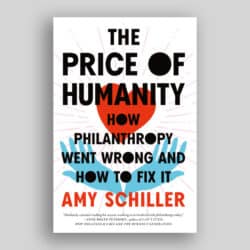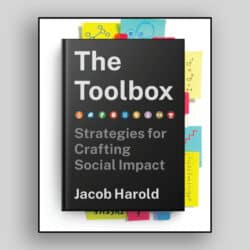Social Enterprise Law: Trust, Public Benefit, and Capital Markets, by Dana Brakman Reiser and Steven A. Dean. Oxford University Press. New York, U.S.A., 2018, ISBN: 9780190249786
How do you persuade social entrepreneurs and impact investors to trust one another’s commitment to impact? That’s the question Social Enterprise Law attempts to answer. Social enterprises (here defined as for-profits chasing both profit and good) must raise capital to realize their social mission. Impact investors want to place capital to serve that same mission. Yet can either trust the other? Will not a minority shareholder, whether entrepreneur or investor, always sit subject to the majority shareholders’ whims on how close to keep to mission? Of most concern for Social Enterprise Law, will investors invest if they can’t be sure that an enterprise will pursue good in the long term?
Trust in the warm and fuzzy sense is not what Social Enterprise Law has in mind. Rather, it deals in trust backed by law. Ordinary for-profit corporations can raise money from strangers because the law, among other things, requires directors of such corporations to act in the best interests of the corporation and to put the corporation’s interests ahead of their own. These rules reassure the investor that the corporation’s management will put her money to proper – which usually means profitable – use.
The impact investor, however, cannot rely on corporate law to force the social entrepreneur to stick to her mission (and the entrepreneur, just the same, cannot lean on corporate law if the investor takes a majority stake). If the entrepreneur and the investor know one another, they may set store in that relationship (or, more likely, in a personalized contract). It’s when the entrepreneur seeks capital further afield that the holes in corporate law become troublesome.
Social Enterprise Law (which speaks to US law but largely applies to Canada) proposes three fixes to that failure. First, the mission-protected hybrid, a corporate form. The benefit corporation, a for-profit form popular in the US, allows social mission but does not force it. The mission-protected hybrid, by contrast, requires companies to put mission ahead of profit. To help regulators and shareholders enforce that priority, a hybrid must report each year on how much money it spent to earn profit and how much to advance mission. A hybrid that spent more money on mission is likely in compliance. A hybrid that did not spend more money on mission must demonstrate by other means that it put mission first. If it fails to do so, it may suffer public and private action.
Second, Social Enterprise Law pitches flexible low-yield paper, a financial instrument. Flexible low-yield paper is a type of convertible debt. An impact investor who holds the instrument earns a below-market yield and stands subordinate to other lenders. But if another investor buys a significant stake in the company – perhaps so he can take the company in a different direction – the impact investor can convert her loan into shares.
If the investor converts her loan into shares, she will dilute the holdings of all other shareholders, including those of the shareholder who just bought the significant stake. Each shareholder will then own a smaller part of the company and therefore a smaller fraction of its worth and decision-making rights. An investor able to convert her loan into a large enough number of shares can more or less dictate the terms by which a significant stake is sold (to prevent a drop in the value of his shares just after purchase, the buyer will have to persuade the investor to relinquish her conversion rights). The investor will have the leverage to make sure the buyer does not abandon mission after the sale.
Third, Social Enterprise Law proposes a new tax status called SE(c)(3). For every dollar an SE(c)(3) company spends to advance mission, the company can exclude a dollar from its taxable income (up to $250,000). And for every dollar an SE(c)(3) company excludes from its income based on mission expenses, it can exclude another dollar from its income. In other words, an SE(c)(3) company can exclude up to $500,000 from its taxable income.
On the downside, an investor in an SE(c)(3) company will pay a higher tax rate on dividends and capital gains. In theory, a company dedicated to mission and therefore (maybe) not so worried about big profits would see virtue in the SE(c)(3) arrangement. Social Enterprise Law believes that retail investors (non-wealthy investors), whose enormous collective capital lies almost untapped by the trend to impact investment, will see SE(c)(3) status as a stamp marking a company’s social bona fides.
The risk that Social Enterprise Law raises – that entrepreneur or investor departs from her social intentions – is real. Yet should we excuse every investor who cites such a risk in her refusal to invest in impact? In particular, should we excuse every investor who decides to sit out until, whether by the mission-protected hybrid or by SE(c)(3) status, the government rides to the rescue?
The promise of impact investment is that it adds to philanthropic money and, especially, government money. It is more money and a different kind of money, money that does not need to follow the government’s timelines or hew to its directives. When investors refuse to invest until the government acts, their money loses much of its power. To realize their promise, impact investors must go where government cannot or will not or has not yet.
If either the mission-protected hybrid or SE(c)(3) status was easy for a government to adopt, that protest would fall with less force. But neither is easy.
The hybrid relies on a distinction between money spent on profit and money spent on mission that many social enterprises will find impossible to apply. A buy-one, give-one social enterprise (like Warby Parker) may be able to split profit and mission expenses. But what about a social enterprise like Clover, a vegetarian chain that aims to convert meat-eaters (at least for a meal)?
Under that model, the more money Clover makes, the more restaurants it opens, and the more restaurants it opens, the better it does against its mission. Where business model and mission tie so closely together – the rule rather than the exception in social enterprise – splitting expenditures seems hopeless. For Clover, it hardly makes sense to say that it spends more money on mission than profit. Yet no one would question its dedication.
SE(c)(3) status reduces the return on runaway success. Funds that invest in start-ups often invest in a slate of companies on the expectation that one or two will make up for the poor returns or losses on all the others. SE(c)(3)’s high tax rates on capital gains will push those investors away. Retail investors may not pursue the same diversified strategy, but setting up a company to depend on such investors when very few so far invest in start-ups will not be a popular choice.
That’s not to say that either the mission-protected hybrid or SE(c)(3) status is a bad idea. And Social Enterprise Law does not claim that they are finished ideas (it admits in particular the challenges to the hybrid’s expenditures test). But the difficulties do suggest debate, disagreement, and a long road to government adoption. In staring down that road, do we forge ahead with what we have or do we wait?
Canadian charities have been pushing on the federal government for years to liberalize the rules that govern charity-run businesses. That liberation appears no closer now than in the past. Yet many charities press ahead with their business plans, because they’re brave and because many cannot rely on other sources of money to meet the needs of their communities. Falling short in those communities is the greater danger. Investors, too, must be brave (and creative, through financial instruments like flexible low-yield paper), because the risk that transformative social enterprises fail for want of capital is the greater danger.
Government can elevate social enterprise and impact investment to heights they will not otherwise reach. The mission-protected hybrid or SE(c)(3) status (or similar policies) may help them to those heights. But the worry is that Social Enterprise Law legitimates the wait for those policies. Government is an accomplice to impact investment, not a prerequisite. As perhaps government knows better than anyone, solutions do not always lie in policy; sometimes they lie in getting out and trying things and letting everyone else catch up.


